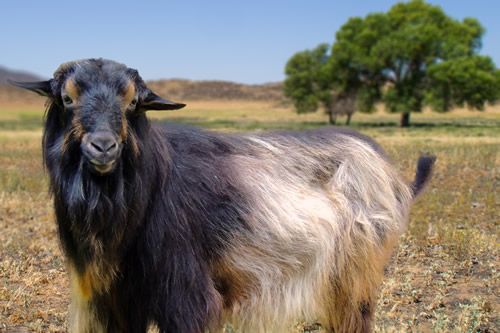How Scientists Decide Which Animal Genomes to Sequence
There are an estimated 8.7 million species on Earth–it’s unlikely scientists will ever sequence them all
/https://tf-cmsv2-smithsonianmag-media.s3.amazonaws.com/filer/b2/3f/b23f3292-cbc2-4a8f-b561-5f748c43c95e/9874371664_e387c90425_b.jpg)
What do African clawed frogs, orangutans and goats all have in common? Geneticists have looked deep, deep inside their genes: These species have had their whole genomes sequenced.
You may have heard about the possibility of getting your own whole genome sequenced. A few years ago, the price of sequencing a human genome dropped to $1,000. It's not pocket change, but nor is it the $2.7 billion it cost to sequence the first human genome. With animals, though, it's more complicated. Since no others of that species have ever been sequenced, it's more difficult to put the genome together without any reference.
The roundworm C. elegans became the first animal to have its genome sequenced, in 1998. Since then, better technology for genome sequencing has allowed scientists to move on to significantly more complicated organisms and do the sequencing much more quickly and effectively.
But it's still unlikely that scientists will ever sequence every animal's genome. They have to pick and choose. So where to start?
There’s no one criteria on which this decision is made. Sometimes it’s to raise awareness about the species and its potential benefit for humanity: That was the reason researchers from the National University of Singapore gave when applying for funding to sequence the temple pit viper’s genome earlier this year, writes Samantha Boh for the Singapore Times. The viper is “the only snake species known to produce a toxin called waglerin,” she writes– “a neuromuscular inhibitor which scientists believe could be developed into a muscle relaxant drug.”
Beyond the potential medical benefits of genome sequencing, the practice important to basic scientific–and historical–understanding of the world. “Nestled in the genomes of living species are the historic footprints of the adaptive events that led them to where they are today,” said Stephen O’Brien, chief of the Laboratory of Genomic Diversity, at a conference.
Studying the present genomes of animals can tell scientists about their past as a species–and the history of the environments where they’ve lived and the other species who have lived with them. For example, the genomes of domesticated animals can help explain humanity’s past. Both humans and animals like cows and pigs were changed (and continue to be changed) when part of humanity settled down and started farming. Studying how they evolved as they became domesticated helps geneticists understand the factors in ancient human evolution, and it can help explain when exactly the animals were domesticated.
These domestic animals' genomes have much to offer humanity as well. “Accurate reference genomes are important for understanding an organism’s biology, for learning about the genetic causes of health and disease and, in animals, for making breeding decisions,” according to a National Human Genome Research Institute press release.
Sometimes sequencing an animal’s genome helps scientists stay sharp. Canadian researchers who normally work on the human genome sequenced the beaver’s genome earlier this year in celebration of Canada’s 150th birthday. “Most of our efforts are on human genomes,” scientist Stephen Scherer told me. “But it actually stimulates us intellectually to look beyond what we’re doing.” It didn't hurt that the beaver is the national symbol of Canada. Because sometimes, good public relations is as good of a reason as any.
